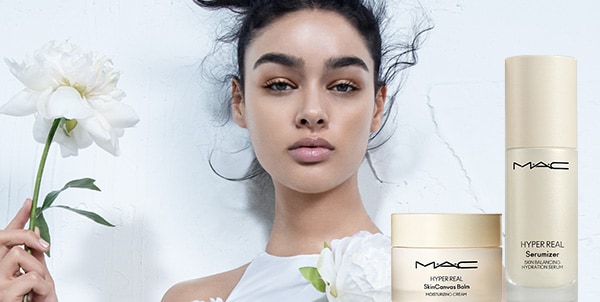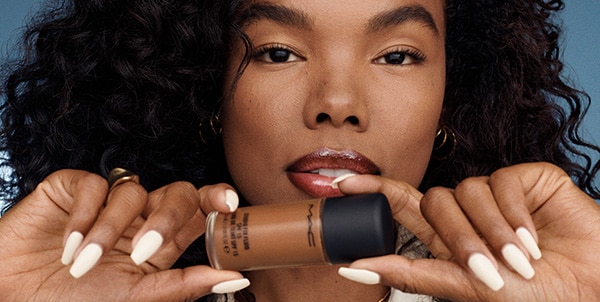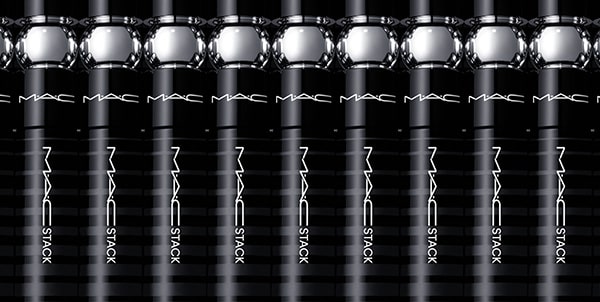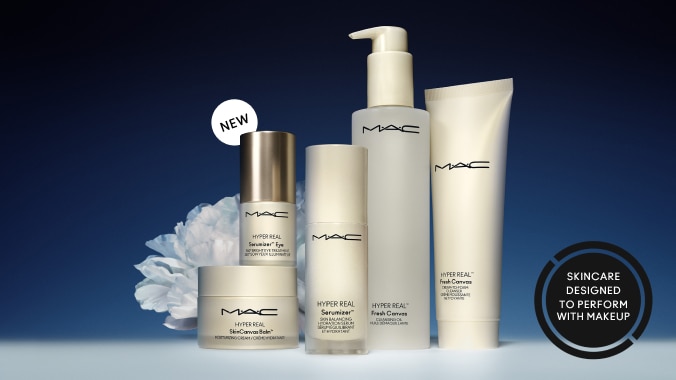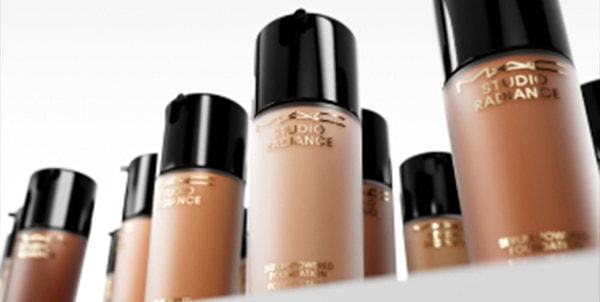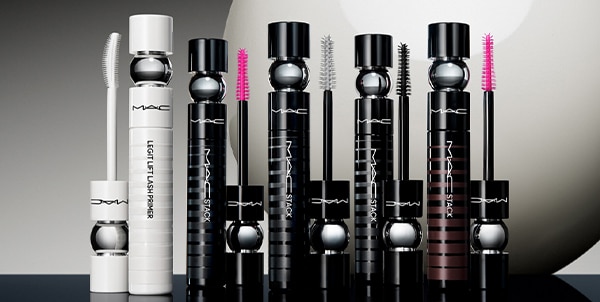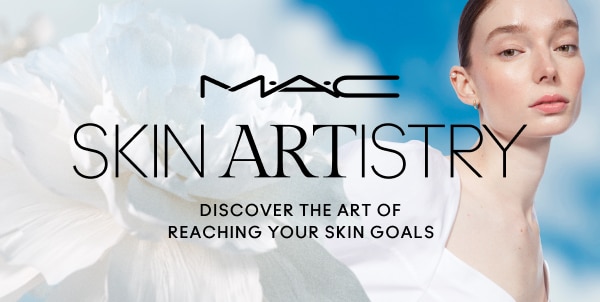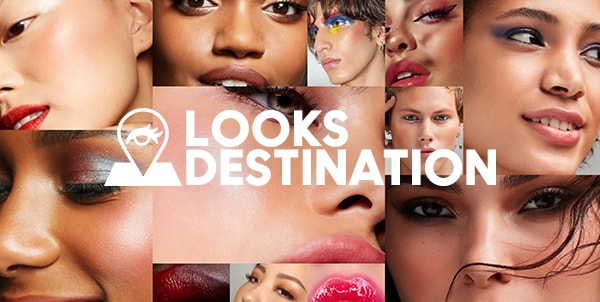Made for Fashion pairs leading fashion designers and makeup artists for a candid conversation about creativity, collaboration and catwalks
London Fashion Week has always been known as the place where brave rising stars, fresh from Central Saint Martins or London College of Fashion, shock and provoke with showpieces and catwalk theatrics. It’s a reputation that has frustrated and motivated UK designers in equal measure – some are keen to shake off the city’s madcap reputation and sense of a lack of commerciality, while others revel in the sense of history and rebellion.
Designer Charles Jeffrey does the latter. He may have interned at Dior, and his designs may be featured in fashion bibles such as LOVE magazine and Dazed, but Jeffrey’s ethos focuses on unconformity and embracing life outside the system. He’s flying the flag for those old-school bastions of London’s fashion – nightclub bathrooms, dance floors, and the nooks and crannies of east London, rather than swanky shops on Mount Street.
His label started off the back of a good night out. While studying for his BA at Saint Martins, Jeffrey was invited to hold his birthday party at cult east London venue VF Dalston, formerly Vogue Fabrics. He and his pals arrived trussed up in fantastical wares, faces and bodies painted, covered in glitter and ready to dance. Their antics drew attention and Jeffrey decided to turn it into a regular night, LOVERBOY, to fund a master’s degree. His fashion label, also dubbed LOVERBOY, followed shortly after, when Lulu Kennedy of talent hub Fashion East spotted his talent.

“LOVERBOY has to have a huge beauty element to it. Makeup is so important to our queer identity and our brand message. It’s the idea of transforming yourself, particularly in the context of nightlife.” – Charles Jeffrey
Experimentation is central to Jeffrey’s practice. At his early presentations, the line between night out and fashion show were blurred. His slot on the Fashion Week show schedule may have been mid-afternoon, but lights were dimmed, music was loud and models were dancing, looking like they had been plucked off some dance floor. The DIY and punk spirit that underpins London’s style heritage runs through his designs – more is more, mistakes are accepted and seen as something beautiful, while mixing is encouraged, whether it’s sharp tailoring with paint-splattered jeans or a cozy knit adorned with electrical tape.
Makeup artist Lucy Bridge has worked with Jeffrey for the last two seasons (and is responsible for the glitter and face paint that adorns his models), but she has known the designer for over nine years. Aptly, they met at a house party when she was living about the iconic, now shuttered, gay venue The George & Dragon. “The makeup we do with Jeffrey is very unconventional,” she explains. “I’m a Virgo so I like to be very precise with what I’m doing, but sometimes Jeffrey will come over and he’ll mess it all up – but it looks amazing! We work well together in that way – it’s a combination of us both.” Think of it as makeup to transform or surprise, rather than makeup to accentuate or flatter. “It’s always about the character – what clothes they’re wearing, what hair they have, who they are…that’s what defines it.”
In the run-up to his upcoming SS17 show, Jeffrey is using many of the products and colours available at the M·A·C Pro store on Carnaby Street – an apt location, given it was the hotspot of Swinging London in the 60s – to dream up T-shirt prints and beauty looks. One Friday night, his gaggle of street-cast models and collaborators are packed inside and arming themselves with paint, while Bridge and M·A·C Senior Artist Dominic Skinner provide a tutorial on collaging the face. The upcoming show may be on the group’s mind, but so is a good party session later that night. Skinner obliges: “Let’s focus on makeup that works from Friday night to Sunday morning,” he smiles. “The decaying part of makeup is cool – it progresses as you progress.”
How important is makeup within your collections? You always have amazing looks at your shows!
Charles Jeffrey: LOVERBOY has to have a huge beauty element to it. Makeup is such a big part of what we do. It’s so important to our queer identity and brand message. It’s the idea of transforming yourself, particularly in the context of nightlife. All the artists I’ve been inspired by, and people that I work with, engage with the idea of transforming themselves.
It seems that trying things out – as we're doing today – is a huge part of your process?
When we’re designing the clothes, it’s all about trying things on, thinking about the character – feeding that into the process. Today, we are using that time to solidify the different chapters of the show, and what makeup will go with which section.
You seem to have a big penchant for colour. You always paint yourself blue for LOVERBOY nights.
I’m sure there are subconscious references to Leigh Bowery, but really it’s just something that felt instinctive. When I started doing LOVERBOY, I had been illustrating a lot, then I just wanted to do it on myself. When we’re working on the beauty looks for the show, I do show Lucy a lot of references from LOVERBOY – painted faces and pictures we’ve taken.
You seem to love dressing up and that “getting ready“ process. Is that sometimes more fun than the actual night out?
It can be – especially when you have time to do it. Often I’m in a mad rush and it’s just a panic! But if you set aside time, have a long bath, get all your mates over, then it’s really good.

“Now we’re working more within a concept that is slightly outside the clubbing thing – we just wanted to move forward. That immediacy will always be there, though – we have to be instinctive.” – Charles Jeffrey
Is the process of getting ready for LOVERBOY, as we're doing here, similar to the process of getting ready for one of your runway shows?
I think at the last show, that was very much the case. Now, we’re working more within a concept that is slightly outside the clubbing thing – we just wanted to move forward. That immediacy will always be there, though – we have to be instinctive. But with the upcoming SS17 collection, all the clothes are so considered; I think we may react differently to them. It’ll be interesting to see how that changes the mood.
People say that you’re really keeping alive a specific London sensibility – how do you define that spirit?
It's all about community and mashing things together. I think London really has that multicultural spirit – lots of different people and voices together. There are so many different layers to what London is about.
I see a real DIY spirit in your work – would you agree?
It’s about transforming yourself with the tools you have. Being young in London, you’re automatically going to be in a low financial situation, which means you have to be more crafty and magpie-ish with stuff. You have to use the stuff that is available to you. Now we’ve become very known for that DIY look. It’s so important to me that the message of the brand is something that anyone can buy into. I’ve never wanted to turn round and do something too exclusive.
